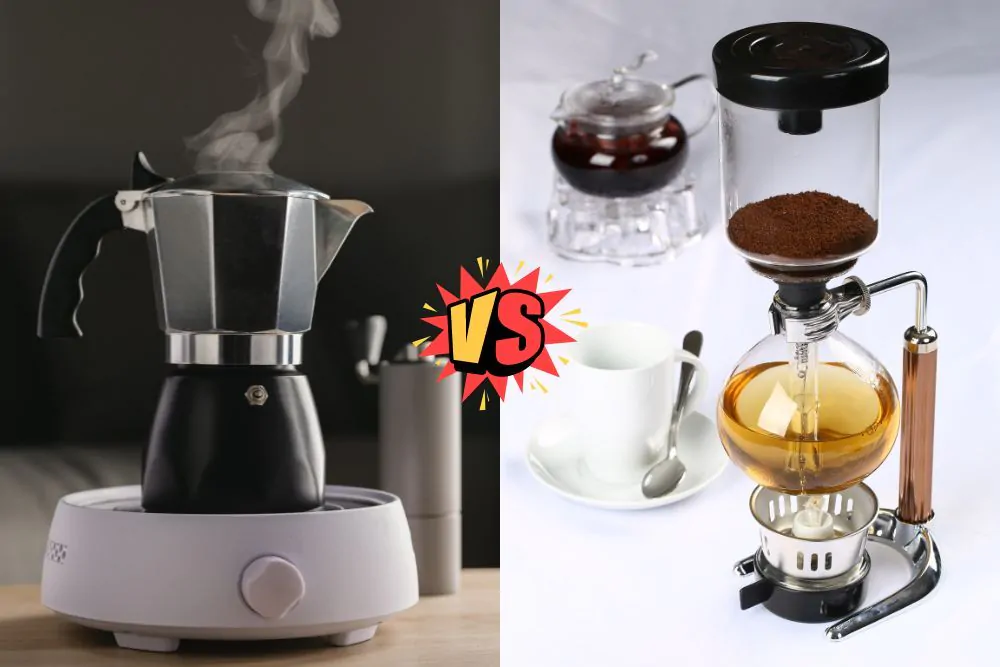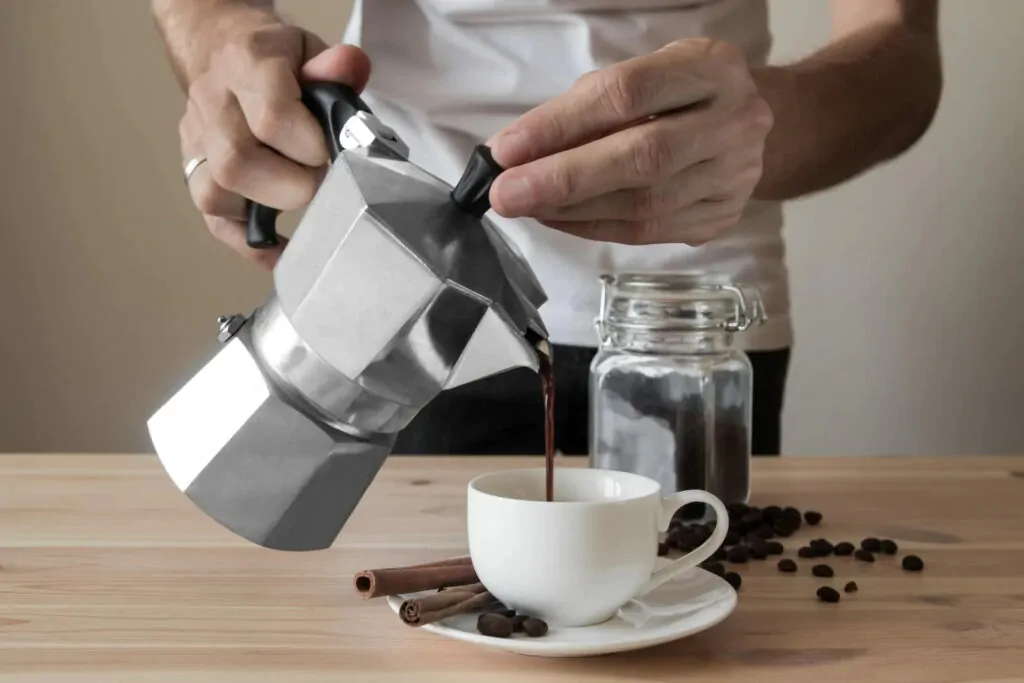There are many methods when it comes to brewing coffee. In this article, we tackle the Moka pot vs. Siphon conundrum to help you make an informed choice.

If you’re a coffee lover like me, you’ve no doubt started to experiment with different brewing methods. Recently, I decided to join the Moka pot versus siphon debate and conducted my own experiments to see which brew I prefer. The answer I arrived at is that “it depends.”
Personally, I love the clean cups of coffee and subtle tastes the siphon provides. However, if you prefer your coffee to deliver a bit of a punch, a Moka pot is the way the go. To help you determine which brewing method suits you best, I’ve compiled a short overview.
What Is a Moka Pot?

Moka pots are traditionally constructed from aluminum since it’s an affordable and durable metal. However, many brands these days are opting for stainless steel instead because it lasts longer and also heats up quicker.
Stainless-steel Moka pots are a bit pricier, though. The coffee you get from a Moka pot is the closest you’ll come to an espresso brew without investing in an expensive espresso machine.
How Does it Work?
Moka pots consist of three chambers: a bottom chamber that contains water; a mid-chamber, also known as the gasket, where the coffee grounds go; and the top chamber, where the brewed coffee lands up.
When the water starts to boil in the lower chamber, the high-pressurized steam that forms rises through a tube into the gasket, where it passes through the coffee grounds. The coffee water and steam then rise to the top chamber, leaving you with a classic Italian-style Moka coffee brew.
What Is a Siphon?

With their glass chambers and burners, siphon coffee makers have both an old-school feel and a scientific look about them. Although these coffee makers are all the rage now, they have been around since the 1800s.
They produce a clear and delicate brew with light and subtle flavors. These coffee makers are also often referred to as vacuum coffee makers due to the vacuum that’s formed during the brewing process.
Check out our reasons why you should choose Siphon Coffee.
How Does it Work?
Siphon coffee makers consist of two glass chambers: a lower chamber that’s filled with water and an upper chamber where the heated water mixes with the coffee ground. Once the water in the lower chamber is warm enough, some of the water turns into vapor, which forces the remaining water into the upper chamber.
Here, the coffee grounds are completely immersed in the hot water. While the lower chamber remains heated at a consistent temperature, the water remains in the upper chamber. When the brewing process is completed, the burner is turned off, which causes a drop in pressure in the lower vessel.
The force of gravity then pulls the coffee from the upper chamber back into the lower chamber, from where you can decant the brew.
Differences Between A Moka Pot vs. Siphon
Here’s a short breakdown of the main differences between a Moka pot and a siphon:
| Moka Pot | Siphon |
| The ground coffee is located in the middle section. | The ground coffee is located in the upper chamber. |
| Moka pots use metal filters, which are able to filter some sediment but not oils. | Siphons use a cloth filter, which provides cleaner coffee since it removes oils as well. |
| With Moka pots, the brewing process involves boiling water. | Inside the upper chamber, the water in which the coffee ground is immersed never reaches boiling point. Instead, a constant temperature is provided by the boiler. |
| A Moka pot keeps the brewed coffee in the upper chamber, which allows you to pour it out directly. | With a siphon, the coffee drips down through the filter and ends up back in the bottom chamber. |
| A Moka pot is easy to use and easy to clean. | Brewing coffee with a siphon is more complex. You need to regulate the heat and time things properly. Also, a siphon is more difficult to clean than a Moka pot. |
Which Coffee Maker Should You Buy?
Personally, I love the ritual of making coffee in a siphon. There’s something special about the intricate and more lengthy brewing process, which also provides a conversation point when you have company.
The delicate flavors and clean brew that a siphon produces are also top selling points for me. The fact that the coffee grounds are immersed in hot water with a consistent temperature allows for flavors to remain in the brew that is typically lost when boiling water is used.
However, folks who enjoy an espresso-style brew will definitely prefer coffee brewed in a Moka pot. In addition, brewing coffee in a siphon takes time, and so does the cleaning process. The hectic schedules that most people have these days may not allow for long-brewing rituals.
In the end, your choice will depend on your taste and lifestyle. Or, if your budget allows, simply invest in both!
